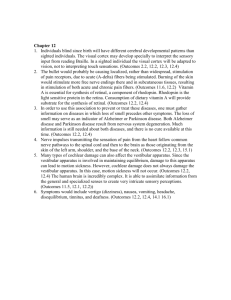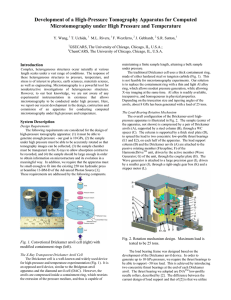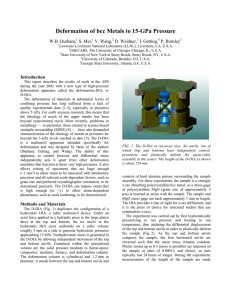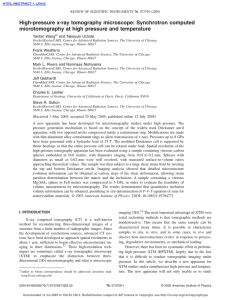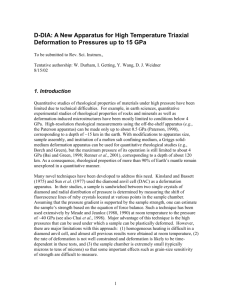Some applications of the rotational Drickamer apparatus
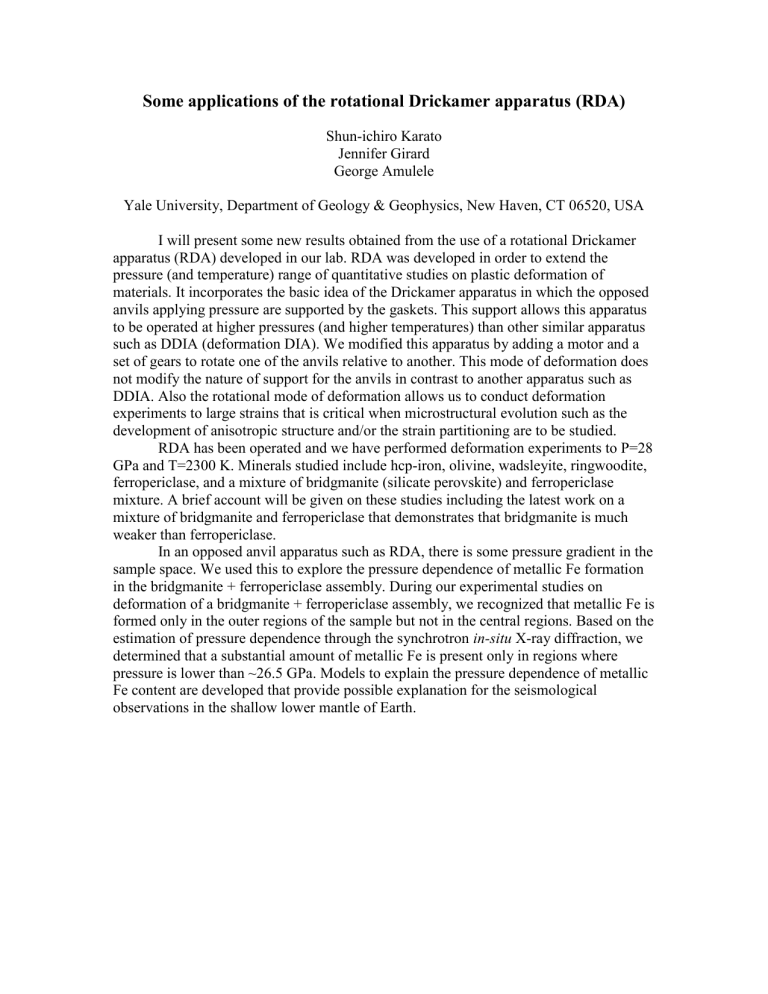
Some applications of the rotational Drickamer apparatus (RDA)
Shun-ichiro Karato
Jennifer Girard
George Amulele
Yale University, Department of Geology & Geophysics, New Haven, CT 06520, USA
I will present some new results obtained from the use of a rotational Drickamer apparatus (RDA) developed in our lab. RDA was developed in order to extend the pressure (and temperature) range of quantitative studies on plastic deformation of materials. It incorporates the basic idea of the Drickamer apparatus in which the opposed anvils applying pressure are supported by the gaskets. This support allows this apparatus to be operated at higher pressures (and higher temperatures) than other similar apparatus such as DDIA (deformation DIA). We modified this apparatus by adding a motor and a set of gears to rotate one of the anvils relative to another. This mode of deformation does not modify the nature of support for the anvils in contrast to another apparatus such as
DDIA. Also the rotational mode of deformation allows us to conduct deformation experiments to large strains that is critical when microstructural evolution such as the development of anisotropic structure and/or the strain partitioning are to be studied.
RDA has been operated and we have performed deformation experiments to P=28
GPa and T=2300 K. Minerals studied include hcp-iron, olivine, wadsleyite, ringwoodite, ferropericlase, and a mixture of bridgmanite (silicate perovskite) and ferropericlase mixture. A brief account will be given on these studies including the latest work on a mixture of bridgmanite and ferropericlase that demonstrates that bridgmanite is much weaker than ferropericlase.
In an opposed anvil apparatus such as RDA, there is some pressure gradient in the sample space. We used this to explore the pressure dependence of metallic Fe formation in the bridgmanite + ferropericlase assembly. During our experimental studies on deformation of a bridgmanite + ferropericlase assembly, we recognized that metallic Fe is formed only in the outer regions of the sample but not in the central regions. Based on the estimation of pressure dependence through the synchrotron in-situ X-ray diffraction, we determined that a substantial amount of metallic Fe is present only in regions where pressure is lower than ~26.5 GPa. Models to explain the pressure dependence of metallic
Fe content are developed that provide possible explanation for the seismological observations in the shallow lower mantle of Earth.



